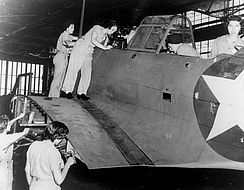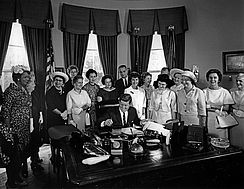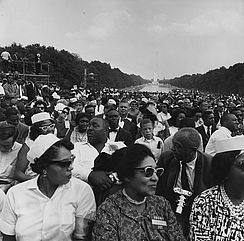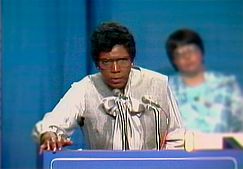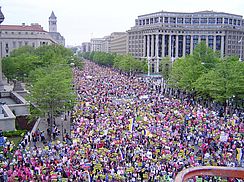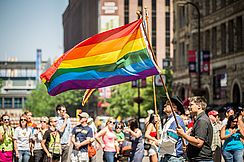Politics & Social Movements
Women in the Civil Rights Movement
Why is Ella Baker called the mother of the civil rights movement?
Excerpt from “Fundi,” a film by Joanne Grant. (Running time 11:31) Used with permission. The complete film is available from Icarus Films. Visit the Ella Baker Center for more resources.
When telling the story of the postwar struggle for equality and diversity of which feminism was such an important component, historians usually begin with the civil rights movement. Even though many of its key events occurred in the 1950s and early 1960s, such as the 1954 Brown v. Board of Education decision outlawing segregation in schools, the Montgomery Bus Boycott in 1955, or the March on Washington in 1963 where Martin Luther King, Jr., delivered his stirring “I Have a Dream” oration, historians take an even longer time frame, situating the origins of the struggle well before the 1950s and extending the timeline of activism into the 1970s, 1980s, and beyond. This perspective is often called “the long civil rights movement.”
Follow her journey: Mississippi sharecropper, voting rights activist, international diplomat.
Trailer for “Who is Unita Blackwell?” a film by Aaron Lehmann. (Running time 1:40) Used with permission. The complete film is available from Lehmann Film Productions.
Another way that historians, especially feminist historians, have reshaped the story of civil rights is by focusing not just on national leaders but on grassroots activists in local communities across the South. Not surprisingly, there is a gender dimension to this reframing: Most of the national leaders of the movement were men, but the energy and support at the grassroots level was often supplied by female recruits. Black women in their communities laid the groundwork in the 1940s and 1950s for the civil rights revolution and then worked to translate public victories such as the Civil Rights Act of 1964 and the Voting Rights Act of 1965 into concrete local results and initiatives. Ella Baker, often identified as the mother of the movement, said it best: “The movement of the fifties and sixties was carried largely by women.”
African-American women’s participation in the civil rights movement was encouraged and facilitated by a number of factors. Dating back to the 1930s and 1940s, black women had been active in local chapters of the National Association for the Advancement of Colored People (NAACP), an organization founded in 1909 that took the lead in raising public awareness of lynching and also orchestrated the legal challenges that eventually produced victories like the 1954 Brown decision. Another important institution was the Highlander Folk School in Tennessee, a unique blend of adult education and political activism. Begun as a training center for labor activists in the 1930s, it developed into a major seedbed for civil rights activism in the 1950s and 1960s, despite concerted efforts by conservative white Southerners to shut the interracial school down.
Perhaps the most important roots for African-American women’s activism were in their own daily struggles for survival in their communities. Building on existing networks of kin and friendship embedded in local institutions such as black churches, black women knew who to turn to and how to get things done. This kind of local knowledge from “everyday kind of people” is how social movements work at a grassroots level. Recruiting friends and relatives through existing networks, meeting in safe spaces such as beauty parlors, and building support through door-to-door political canvassing, women quickly found themselves on the front lines of boycotts, voter registration drives, demonstrations, and even acts of civil disobedience that landed them in jail. Both young adults and older, more established community members answered the call.
Take Rosa Parks. Our popular image is of a tired seamstress who refused to give up her bus seat to a white person. She may or may not have been tired, but she was far from a neophyte when it came to civil rights. For years she had been active in her local NAACP, and she had recently attended a workshop at the Highlander Folk School. Her refusal to give up her seat was part of a carefully crafted strategy to force the issue. The ensuing yearlong boycott of the Montgomery bus system was organized and carried out primarily by black women, who turned to carpools instead of city buses to take them to white neighborhoods where they worked as domestics.
Ella Baker represented another path to activism. A strong and principled woman who had worked as a field organizer for the NAACP in the 1940s, she often bumped up against the men leading the organizations she worked in, especially male ministers like Martin Luther King, Jr. King ran the Southern Christian Leadership Conference, which Baker joined in 1957, eventually becoming its executive director. When sit-ins swept the South, mainly led by college students, she signed on with the new Student Nonviolent Coordinating Committee (SNCC), where she served as a mentor to the rising generation of student activists. An impassioned believer in participatory democracy, Baker’s motto was “strong people don’t need strong leaders.”
Why was Little Rock Central High School the focal point of national controversy in 1957?
Trailer for “Daisy Bates: First Lady of Little Rock,” a film by Sharon La Cruise. (Running time 1:08) Used with permission. The complete film is available from Sakkara Films. For more information, visit PBS and ITVS.
The roll call of courageous Southern black women in the movement is long. After being denied the right to register to vote in Ruleville, Mississippi, Fannie Lou Hamer became a field secretary for SNCC and the driving force behind the Mississippi Freedom Democratic Party’s challenge to the all-white state delegation chosen for the 1964 Democratic National Convention in Atlantic City. Daisy Bates created an NAACP youth council in her hometown of Little Rock, Arkansas, and later provided emotional and physical support to the “Little Rock Nine” who desegregated the high school in 1957. Septima Poinsette Clark served as the director of workshops at the Highlander Folk School and later spread her concept of citizenship education through the South. The younger generation was well represented by activists such as Ruby Doris Smith, who was severely beaten while participating in the Freedom Rides challenging segregation on public transportation in 1961, and Diane Nash, who led the Nashville sit-ins while a student at Fisk; both went on to be active in SNCC.
In many ways the civil rights movement had a ripple effect on later social movements, especially the revival of feminism. Drawing parallels between the status of African Americans and that of women (what Pauli Murray called “Jane Crow”), women individually and collectively challenged the structures of American life — social, economic, legal — that kept women from full citizenship and equality. Mobilization efforts on the part of Latinas, Native Americans, and Asian Americans challenged traditional feminist and civil rights organizations to broaden their representation to include an even wider diversity of women’s voices. In sum, many of the political upheavals of the 1960s, 1970s, and beyond had strong antecedents in the African American civil rights struggle.
How to Navigate our Interactive Timeline
You will find unique content in each chapter’s timeline.
Place the cursor over the timeline to scroll up and down within the timeline itself. If you place the cursor anywhere else on the page, you can scroll up and down in the whole page – but the timeline won’t scroll.
To see what’s in the timeline beyond the top or bottom of the window, use the white “dragger” located on the right edge of the timeline. (It looks like a small white disk with an up-arrow and a down-arrow attached to it.) If you click on the dragger, you can move the whole timeline up or down, so you can see more of it. If the dragger won’t move any further, then you’ve reached one end of the timeline.
Click on one of the timeline entries and it will display a short description of the subject. It may also include an image, a video, or a link to more information within our website or on another website.
Our timelines are also available in our Resource Library in non-interactive format.
Timeline Legend
Yellow bars mark entries that appear in every chapter
This icon indicates a book
This icon indicates a film
1971 The Click! Moment
The idea of the “Click! moment” was coined by Jane O’Reilly. “The women in the group looked at her, looked at each other, and ... click! A moment of truth. The shock of recognition. Instant sisterhood... Those clicks are coming faster and faster. They were nearly audible last summer, which was a very angry summer for American women. Not redneck-angry from screaming because we are so frustrated and unfulfilled-angry, but clicking-things-into-place-angry, because we have suddenly and shockingly perceived the basic disorder in what has been believed to be the natural order of things.” Article, “The Housewife's Moment of Truth,” published in the first issue of Ms. Magazine and in New York Magazine. Republished in The Girl I Left Behind, by Jane O'Reilly (Macmillan, 1980). Jane O'Reilly papers, Schlesinger Library.



















